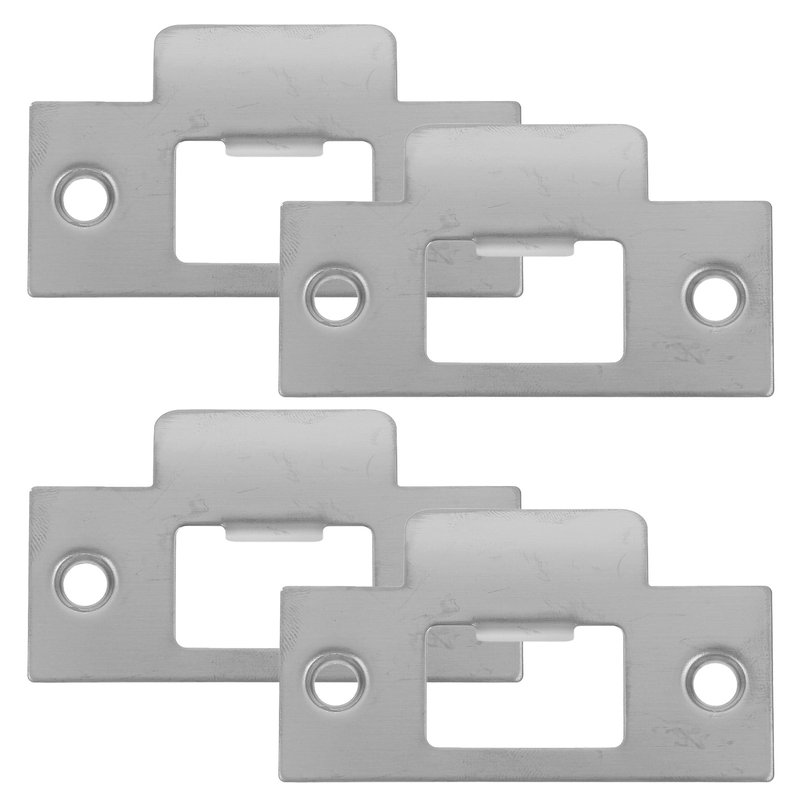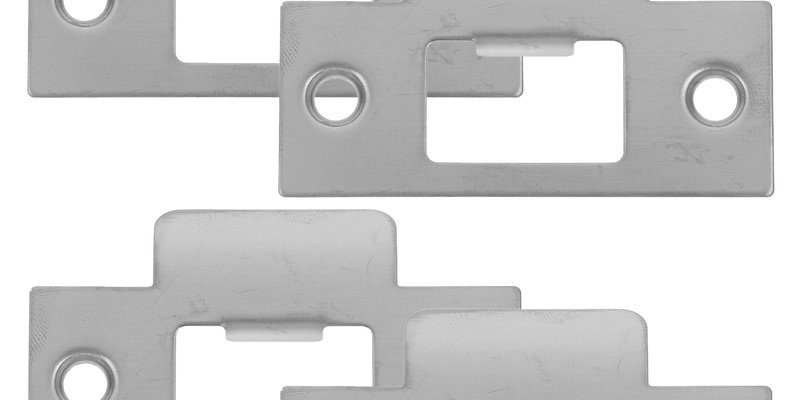
You might be wondering, what makes a good door strike plate? Well, it’s all about the material. A high-quality strike plate can withstand attempts to force your door open, ensuring that your home stays safe and sound. Let’s dive deeper into the best materials for door strike plates that emphasize durability and strength, so you can make an informed choice for your home.
Why Door Strike Plates Matter
Before we get into materials, let’s talk about what a door strike plate does. Essentially, it’s a small metal piece that’s attached to the door frame. When you close the door, the latch fits into this plate, securing the door. If the strike plate is low quality or made from flimsy materials, it can bend or break, leaving your door vulnerable. Think of it as the trusty shield that guards your entrance.
In terms of security, a robust strike plate can deter intruders. If someone tries to kick in your door, a strong strike plate helps prevent the door from coming loose. Many break-ins occur because the strike plate fails, allowing the door to be opened easily. That’s why investing in a good strike plate is just as important as your lock.
Common Materials Used in Strike Plates
When it comes to strike plates, various materials are available, each with its pros and cons. Here are the most common:
- Stainless Steel: Known for its strength and resistance to rust and corrosion, stainless steel is a popular choice. It’s durable and can withstand significant force.
- Brass: While brass looks attractive, it’s softer than stainless steel. It might work great for interior doors but isn’t the best for exterior doors.
- Steel: Mild steel is another strong option, often coated to prevent rust. Like stainless steel, it’s robust, making it suitable for main entry doors.
- Zinc Alloy: Offering good strength at a lower cost, zinc alloys are a decent choice for strike plates. They can be less durable than steel but still provide reasonable security.
Choosing the right material can really make a difference in how secure your door feels.
Stainless Steel: The Top Performer
When it comes to durability, stainless steel reigns supreme. This material resists rust and corrosion, making it perfect for exterior doors that face the elements. Plus, it can handle heavy-duty use without bending. You might find that stainless steel strike plates are often thicker than other materials, which adds to their strength.
Here’s the thing: if you live in an area with harsh weather or high humidity, stainless steel is your best bet. It won’t warp or corrode like some other materials, giving you peace of mind. Installing a stainless steel strike plate is like adding extra layers of armor to your door—it just makes sense.
Brass: Aesthetic Appeal with Limitations
Brass has a warm, classic look that many homeowners love. It can add a decorative touch to your entryway. However, let me explain why it’s not the best for every situation.
While it looks good, brass is softer and more malleable than stainless steel. If you’re using it on an exterior door, you might want to reconsider. It can wear down faster under stress and may not hold up well against attempts to force the door open. If you’re aiming for aesthetic appeal and have primarily interior doors, brass can still be a lovely choice—but don’t count on it for high-security needs.
Steel: A Budget-Friendly Choice
Mild steel is another option worth exploring. It’s often used in many affordable strike plates. Compared to stainless steel, mild steel can be less expensive but still very strong. Like stainless steel, it can handle a fair amount of force without bending or breaking.
The downside? Mild steel can rust over time, especially if it’s not well-coated. If you do choose steel, make sure it has a good protective coating. This keeps it from rusting and extends its life. Honestly, if you’re looking for a balance of price and durability, steel might be your go-to option.
Zinc Alloy: The Budget Conscious Choice
If you’re on a tight budget, zinc alloy may be the material you want to consider. It offers a fair amount of strength and is generally more affordable than steel or stainless steel. However, it won’t perform as well if someone tries to break down your door.
Zinc alloy is a great option for lesser-used doors, such as basement entries or interior doors. Just keep in mind that it may not be the best choice for your main entrance if safety is a top priority. Think of it as a decent mid-level option that can work well in specific situations.
Choosing the Right Strike Plate for Your Needs
Now that you know the different materials and their pros and cons, how do you pick the right one? Here are some key factors to consider:
1. Location of the Door: Is it an interior or exterior door? For exterior doors, go with stainless or steel for the best protection.
2. Frequency of Use: A door that gets a lot of traffic needs a sturdier strike plate, so choose a more durable material.
3. Aesthetic Preferences: If you want something that looks good, brass might be your choice for interior doors but avoid it for exterior ones.
4. Budget: If money’s tight, zinc alloy or mild steel can work for less critical applications.
By considering these factors, you’ll be well-equipped to choose the strike plate that best fits your needs.
Installation Tips for Your Strike Plate
Once you’ve chosen the right material, proper installation is key. Here’s a quick guide to get you started:
1. Gather Your Tools: You’ll need a screwdriver, drill, and potentially a chisel for adjustments.
2. Remove the Old Plate: Unscrew the existing strike plate and check for any damage around the area.
3. Mark and Drill: Place your new strike plate in position. Mark where you’ll be drilling and make sure everything lines up.
4. Attach the New Plate: Secure the new strike plate with screws, ensuring it’s flush against the door frame.
A well-installed strike plate can make all the difference in your door’s security.
Finally, remember that no matter how strong your strike plate, it’s just one part of a larger security system. Pair it with a solid lock and a good door, and you’ll have a well-fortified entrance.
With this knowledge in hand, you can confidently choose the right strike plate material for your home—making it a safer place for you and your loved ones.
